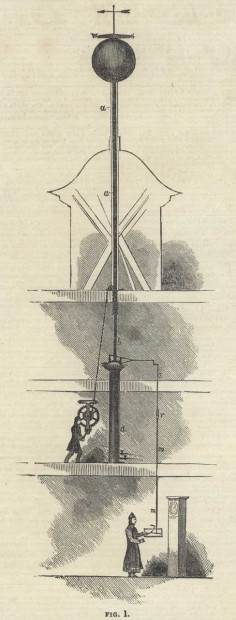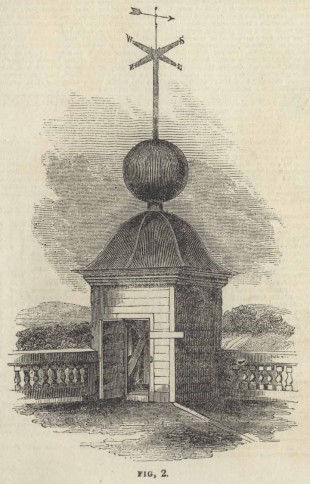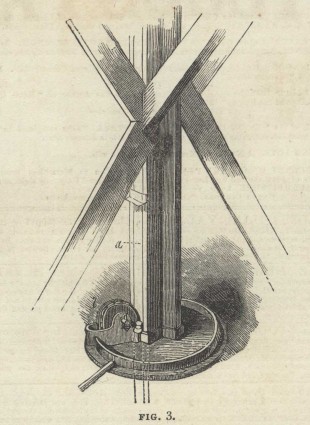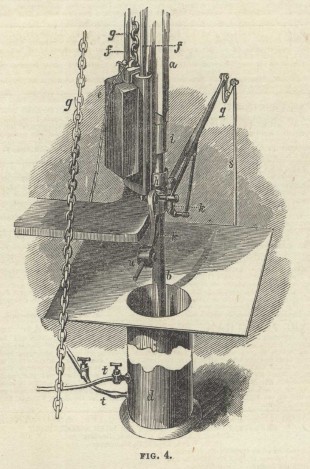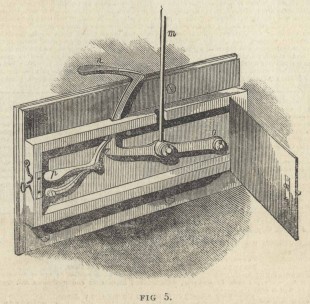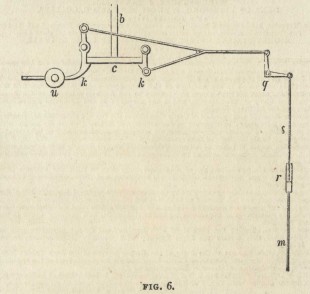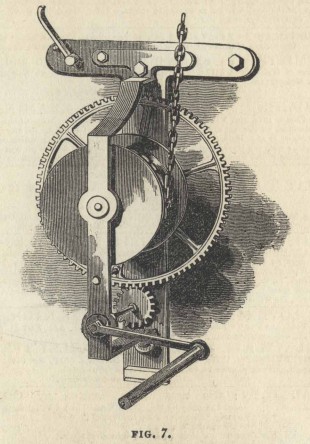…where east meets west
- Home
- Brief History
- The Greenwich Meridian
- Greenwich
(1675–1958) - Herstmonceux
(1948–1990) - Cambridge
(1990–1998) - Outstations (1822–1971)…
- – Chingford (1822–1924)
- – Deal
(1864–1927) - – Abinger
(1923–1957) - – Bristol & Bradford on Avon
(1939–1948) - – Bath
(1939–1949) - – Hartland
(1955–1967) - – Cape of Good Hope
(1959–1971)
- Administration…
- – Funding
- – Governance
- – Inventories
- – Pay
- – Regulations
- – Royal Warrants
- Contemporary Accounts
- People
- Publications
- Science
- Technology
- Telescopes
- Chronometers
- Clocks & Time
- Board of Longitude
- Libraries & Archives
- Visit
- Search
Contemporary account from 1844 – The Time Ball
| Date: | 1844 |
| Author: | Anonymous |
| Title: | The Time Ball , Royal Observatory, Greenwich. From the "Illustrated London Almanack" for 1845, just published |
| About: | Published in The Illustrated London News on 9 November 1844, p.304, the account (unlike that of the 1834 account listed above), has detailed descriptions and illustrations of the component parts. Note: figures 6 & 7 are incorrectly labelled: figure 6 is actually part of figure 5 and figure 7 should have been labelled figure 6. |
| Images: | Seven |
[The text below is reproduced as originally published. Figures 6 & 7 are incorrectly labelled: figure 6 is actually part of figure 5 and figure 7 should have been labelled figure 6.]
THE TIME BALL, ROYAL OBSERVATORY, GREENWICH.
FROM "THE ILLUSTRATED LONDON ALMANACK," FOR 1845, JUST PUBLISHED.
The keeping of true time is important to all persons; but to those engaged in navigating the " trackless seas," it is of such consequence that the government, since the time of Flamsteed, the first Astronomer Royal, have not hesitated to expend large sums of money for its discovery, preservation, and announcement to the world. The business is now concentrated in the Royal Observatory at Greenwich, where, from the beauty of the instruments, the exactitude of the observations, and the high scientific ability of the officers engaged, the once difficult problem of finding the precise instant when one o'clock touches the world's history, is no longer a matter of doubt or difficulty.
The present establishment at the Observatory, was brought into operation about ten years ago, when the resolution of the Lords of the Admiralty to publish the mean solar time at Greenwich, once in every day of the year, at one o'clock P.M. was first observed, and where the practice, without a single intermission, or the most trifling inaccuracy, has been continued ever since.
The sidereal time is ascertained from regular observations of the transits of certain stars over the meridian, whose places have been carefully determined; and from these, the proper data are obtained for finding the mean solar time
To go into the minutia; of these operations would be beyond our province; we shall, therefore, confine ourselves, as far as matters of detail are concerned, to a description of the apparatus by which the regular publication of the time is effected.The hour of one o'clock is announced by the descent of a large black ball, from the summit of a pole, which surmounts the north-western [north-eastern] turret of the Observatory; a position singularly favourable for its exhibition to mariners on their progress down the adjacent river Thames. The apparatus, described in the simplest terms, may be said to consist of a hoist for raising the ball, a trigger and discharging gear for its liberation, and a clock, regulated by observation, for giving the required moment of time.
The cuts will make the mechanical arrangements intelligible.
Fig. 1, exhibits an upright of the first, second, and third floors, on which the apparatus is placed, and a section of the turrets which carries the ball a a, the supporting shaft bearing the ball on its top and terminating below, at b, in a piston, which works in an air cylinder, d, and by which the too sudden descent of the ball is prevented. m, r, s, a combination of rods and levers connected with the discharging trigger.
Fig. 2. The Ball Turret, viewed from the top of the Observatory, with the ball down.
Fig. 3. Apparatus in the Turret-house. a, the triangular supporting shaft; b, the pulley over which passes the chain for raising the ball.
Fig. 4. Apparatus of the second and third floors. a, triangular supporting shaft; b, piston rod; d, cylinder; e, a weight, having a collar h, which when raised by the chain g, elevates the supporting shaft; f, f, iron guiding rods; h, k, catches for fixing the piston, when the ball has been hoisted to the top of the pole ; s, rod, by which the piston is set free from the grasp of the catches; t, t, cocks for regulating the discharge of air in the cylinder.
Fig. 5. The discharging trigger, placed in the first floor of the Time-ball apartments. nz, iron discharging rod; n, trigger; o, axis of the trigger; p, spring for holding the trigger till the ball is dropped.
Fig. 6. Windlass placed in the second floor, for "winding up," or raising the ball.
Before elevating the ball at five minutes to one, a signal is made of the intention to do so, by raising it "half-mast high." Observers should then get their chronometers ready, and as the descent of the ball occupies several seconds, they should confine their attention to the moment when the ball leaves the top, as, it is that, only, which indicates the hour.
The uses of this practice are, as we have already hinted, both various and important. We have only to mention, that observations on the drop of the ball, repeated day after day, will give not only the error of clocks, &c., but also their daily rate. Thus, if your clock shows 1h. 3m. 5s. at the dropping of the ball, you will be assured that your clock is in error 3m. 5s., being that amount before Greenwich mean solar time. Again, if at the dropping of the ball your clock shows 56s. 55m. past 12, your clock will be also in error 3m. 5s., but it will be that amount after Greenwich mean solar time.If on a certain day you have noticed your clock to show 1h. 3m. 5s. at the dropping of the ball, and the day after to show 1h. 3m. 7s., then you will know that your clock has gained 2 seconds in the 24 hours. But, if instead of 1h. 3m. 7s. your clock should show 1h. 3m. 3s., then it will have lost 2 seconds in the 24 hours.
The mean time at Greenwich being known, the mean time at other places may be ascertained, when the longitudes are known. Thus, the longitude of Portsmouth is 4m. 24s. in time, west of Greenwich; consequently, when it is one o'clock at Greenwich, it will then want 4m. 24s. to one at Portsmouth. The longitude of Cambridge is 23½s. east; therefore, at the moment of one o'clock at Greenwich the time at Cambridge will be lh. 0m. 23½s.
© 2014 – 2025 Graham Dolan
Except where indicated, all text and images are the copyright of Graham Dolan
